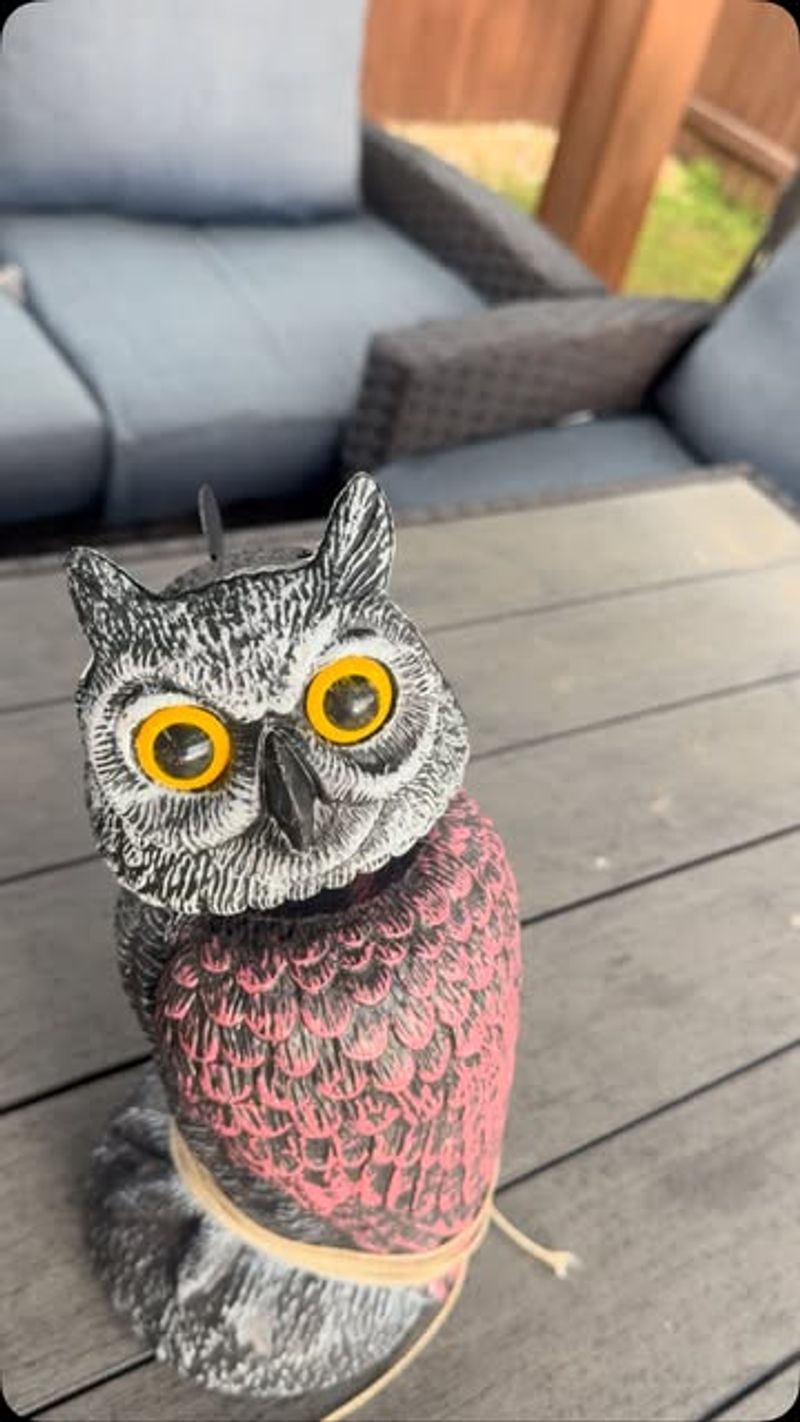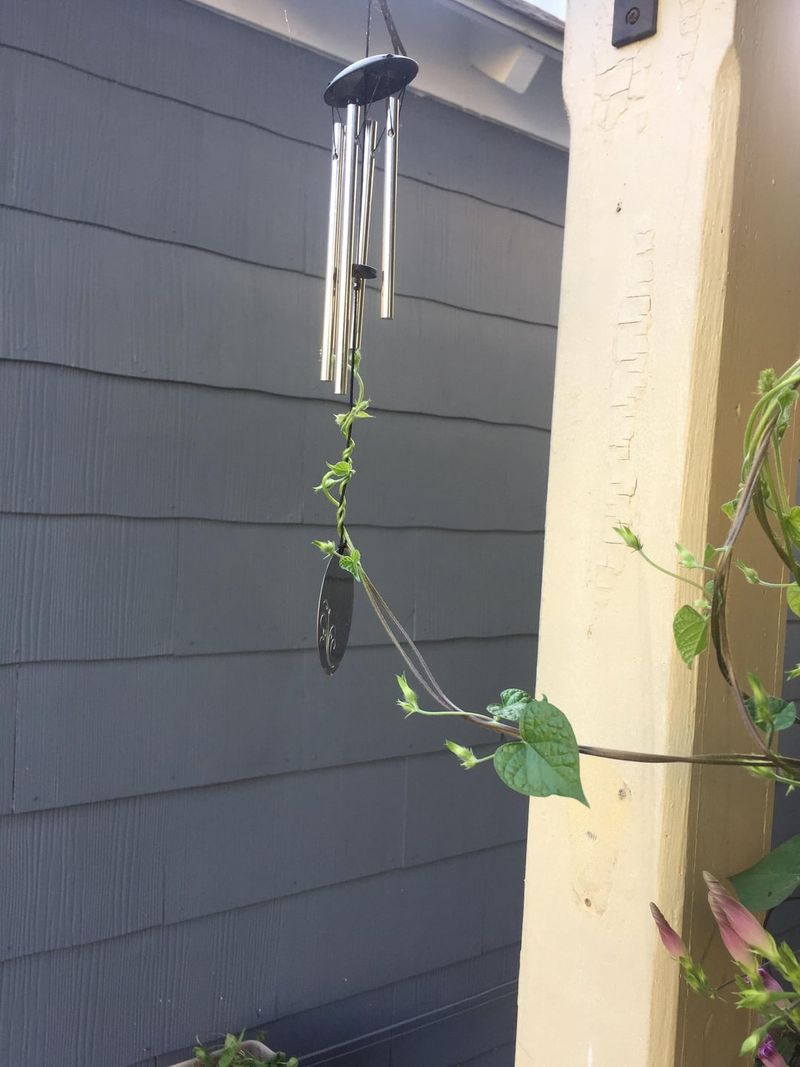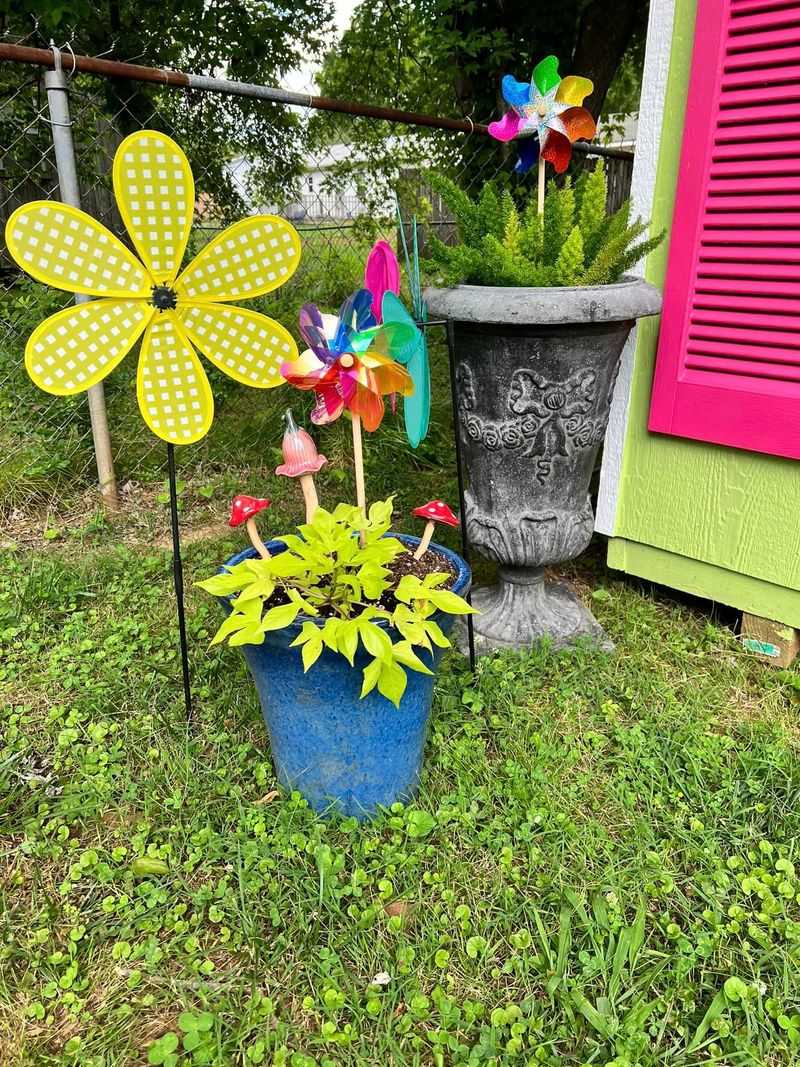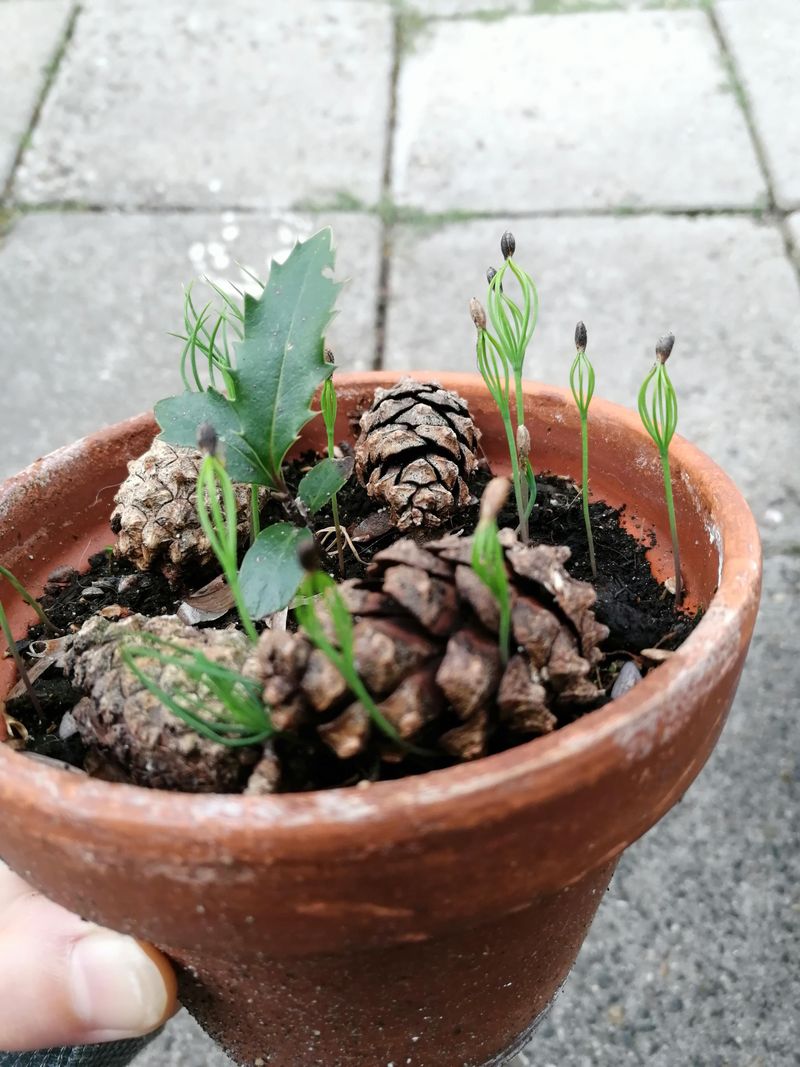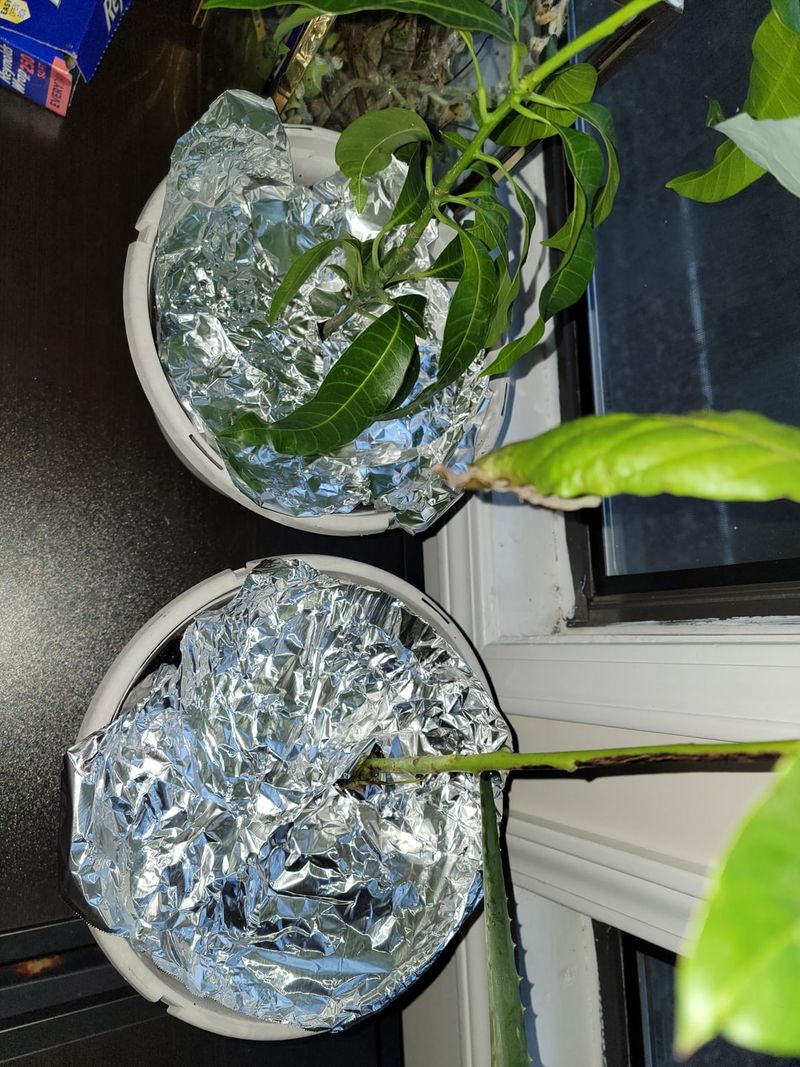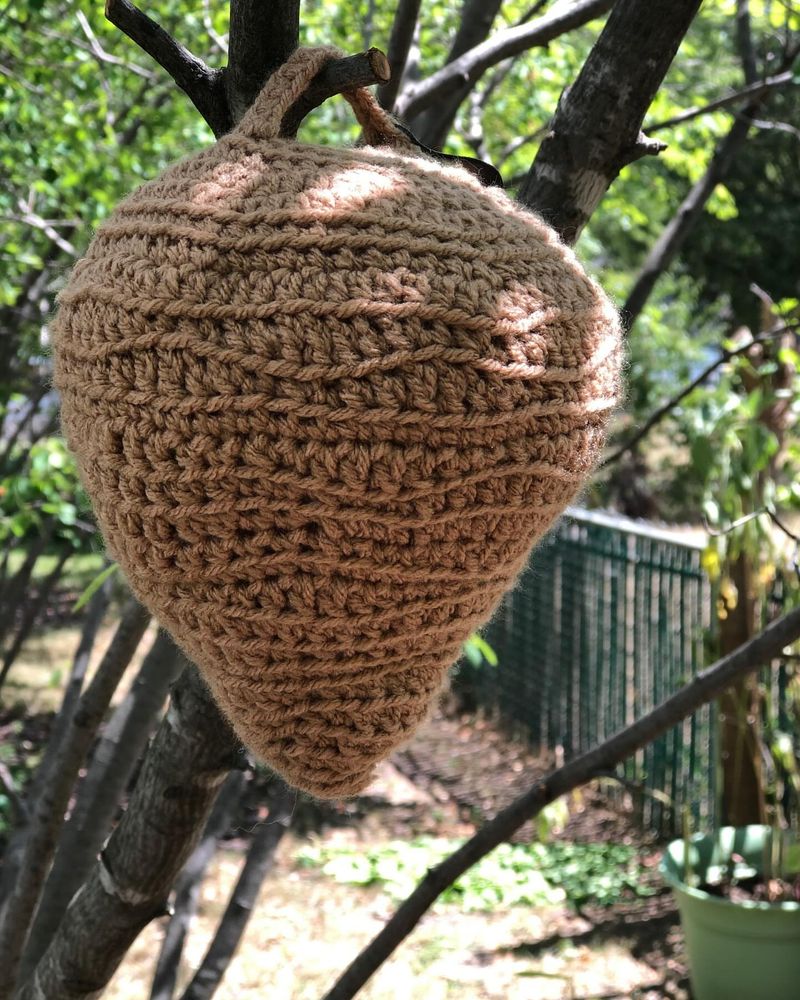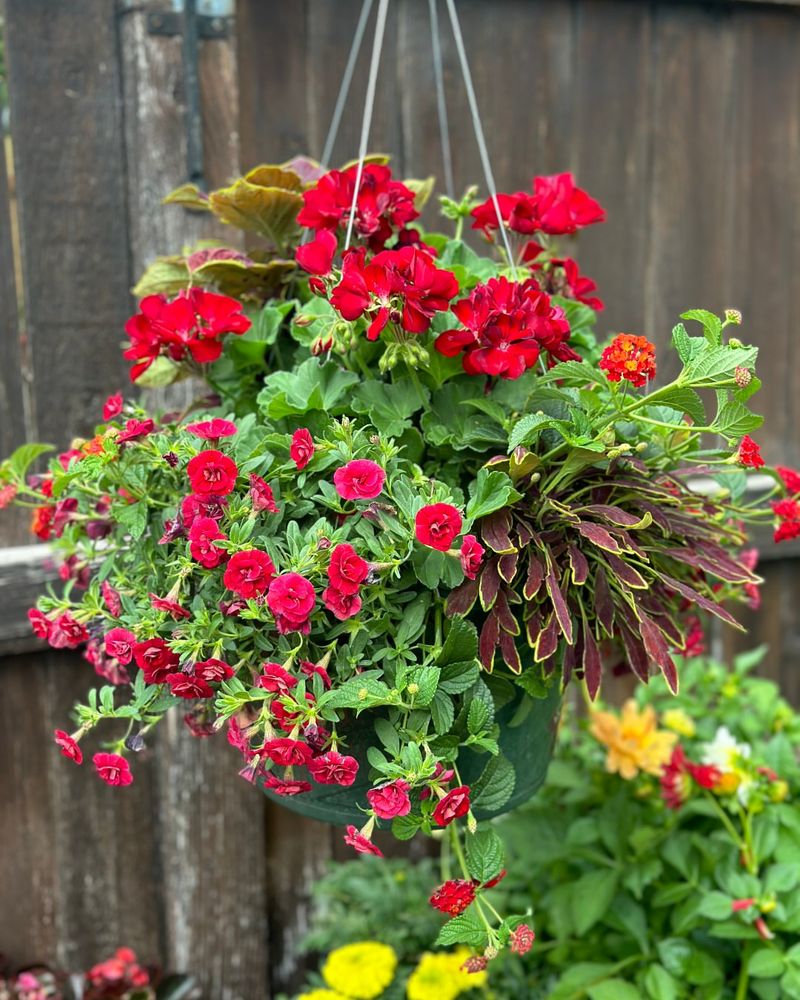Your hanging flower baskets are for blooms—not bird nests. While birds can be cute, their nests can damage flowers, make a mess, and even block growth.
These 15 clever, humane tricks will help keep birds out of your baskets without harming them, so your plants stay pristine and your porch stays peaceful.
1. Shiny Objects That Dazzle and Deter
Old CDs or reflective tape strips hung near your baskets create flashes of light that birds find disorienting. The unpredictable reflections make them nervous about settling in.
Simply hang a few CDs with fishing line or string them together in a mobile-like arrangement. Birds dislike the random light patterns and will search for more stable locations to build their homes.
For best results, position the shiny objects where they’ll catch sunlight and create moving reflections throughout the day.
2. Fake Predators Keep Birds at Bay
Plastic owls, hawks, or even rubber snakes strategically placed near your hanging baskets tap into birds’ natural survival instincts. Most nesting birds instinctively avoid areas where predators lurk.
Moving these fake predators every few days prevents birds from realizing they’re harmless decoys. A stationary owl quickly becomes just another garden ornament to savvy birds.
Realistic-looking models with glass eyes or moving parts work best for fooling even the smartest garden visitors.
3. Wind Chimes Create a No-Nest Zone
The gentle tinkling of wind chimes creates an unpredictable sound environment that makes birds uneasy. Nesting birds prefer quiet, stable locations where they can hear approaching dangers.
Hang small chimes directly from the basket or nearby hooks. Metal chimes produce sharper sounds that tend to be more effective than wooden or bamboo varieties.
As a bonus, you’ll enjoy the pleasant musical accompaniment to your garden time while keeping your flowers bird-free!
4. Pinwheels Spin Birds Away
Colorful garden pinwheels create movement and vibration that birds find unsettling when searching for nest sites. Their unpredictable spinning and occasional noise make your hanging baskets seem unsafe.
Stick a few small pinwheels directly into the soil of your hanging basket or attach them to the hanging chains. Even slight breezes will set them spinning.
Choose bright colors like silver, red, or blue for maximum visual deterrent effect combined with the motion.
5. Protective Mesh Barriers
Garden mesh or chicken wire formed into a dome over your basket creates a physical barrier birds can’t penetrate. The flowers grow through the gaps while birds can’t access the soil for nesting.
Cut a circle of mesh slightly larger than your basket’s diameter. Shape it into a shallow dome and secure it with garden ties or thin wire around the basket’s rim.
Choose mesh with openings large enough for plants to grow through but small enough to discourage birds from squeezing inside.
6. Prickly Pine Cones as Natural Deterrents
Collected pine cones arranged on the soil surface create an uncomfortable, prickly landing pad that birds avoid. Their natural appearance blends with your garden aesthetic while serving a practical purpose.
Simply place several pine cones on the soil surface between plants, pointy-side up. Birds looking for nesting spots will quickly move on when they can’t find comfortable footing.
As a bonus, pine cones slowly break down over time, adding organic matter to your potting soil.
7. Motion-Activated Sprinklers Surprise Visitors
Small motion-activated sprinklers deliver a harmless but startling spray when birds approach your baskets. Birds quickly learn to avoid the area after a surprising shower or two.
Modern garden sprinklers come in compact sizes perfect for hanging basket protection. Some even connect to small water bottles rather than requiring hose connections.
Position the sensor to detect movement near your baskets but not in high-traffic areas where you’ll constantly trigger it yourself!
8. Aromatic Herbs Birds Naturally Avoid
Strong-smelling herbs like rosemary, mint, and lavender naturally repel many bird species with their potent oils. Plant these herbs alongside your flowers for a beautiful, functional combination.
Birds have sensitive respiratory systems and generally avoid strong plant aromas. The herbs most effective at deterring birds also happen to be drought-tolerant companions for many flowering plants.
For maximum effect, occasionally brush your hand against the herbs to release more of their natural oils into the air.
9. Fishing Line Spider Web Trick
Transparent fishing line strung in a loose web pattern above and around your basket mimics spider webs that birds instinctively avoid. They can’t see the clear lines until they’re too close for comfort.
Tie several lengths of fishing line to the basket hanger, stretching them outward like a tent. Add a few crosspieces to create an irregular web pattern.
Use 10-20 pound test line which remains nearly invisible but is strong enough to maintain its shape in light winds.
10. Aluminum Foil Strips That Flash and Crackle
Strips of aluminum foil twisted and hung around your baskets create both visual and auditory deterrents. Birds dislike the unpredictable flashing and crackling sounds when breezes hit the foil.
Cut kitchen foil into 12-inch strips, twist them loosely, and attach them to the basket chains or rim. The slightest air movement makes them dance and reflect light unpredictably.
Replace the strips every few weeks as they become weathered and lose their reflective properties.
11. Frequent Basket Rotation Disrupts Nesting
Regularly moving your hanging baskets just a few feet disrupts birds’ nesting plans without affecting your plants. Birds seek stable environments and abandon locations that keep changing.
Switch basket positions every 2-3 days during peak nesting season (typically spring). Even small location changes signal to birds that this isn’t a secure nesting spot.
This method works especially well when combined with other deterrents and requires no additional materials or costs.
12. Ultrasonic Bird Repellers for Tech-Savvy Gardeners
Battery-operated ultrasonic devices emit high-frequency sounds that irritate birds without being audible to humans. These modern solutions work well for persistent bird problems.
Mount a small ultrasonic repeller near your hanging baskets, following the manufacturer’s recommendations for effective range. Many models include motion sensors to conserve battery life.
Some advanced units combine ultrasonic technology with flashing lights for a dual-sensory deterrent that works day and night.
13. Decoy Nests Trick Territorial Birds
Artificial bird nests placed strategically near your hanging baskets exploit many birds’ territorial nature. Most birds avoid building where another bird has already claimed territory.
Purchase realistic-looking nest replicas or craft your own from natural materials. Position them on branches or hooks visible from your hanging baskets but far enough away to protect your flowers.
For added effectiveness, place a few fake eggs in the decoy nests during early spring nesting season.
14. Bird-Repelling Essential Oil Spray
Homemade sprays with peppermint, citronella, or eucalyptus essential oils create scent barriers birds avoid. These natural ingredients are safe for plants but unpleasant for sensitive bird respiratory systems.
Mix 10-15 drops of essential oil with a cup of water and a drop of dish soap in a spray bottle. Lightly mist the outer edges of your basket and hanger every few days.
Reapply after rain or watering since these natural repellents wash away easily but remain effective when maintained.
15. Strategic Watering Schedule Deters Nesters
Watering your baskets early each morning creates a daily disruption that discourages nesting birds. Most birds prefer to scout and build nests during morning hours when your watering routine will interrupt them.
Use a gentle shower setting on your watering can or hose to avoid damaging delicate plants. The regular human activity combined with moisture makes baskets less appealing nest sites.
Consistent timing is key—birds quickly learn to avoid locations with predictable daily disturbances.



